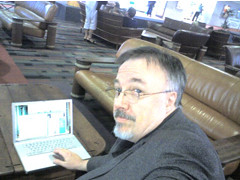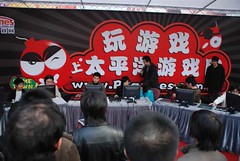I’ve learned so much since I got to New Zealand, but my mind is not in the best condition to be learning. I’m tiring easily and am now feeling some diminished capacity from the jet lag. Tomorrow I do three presentations in Dunedin, on the South Island, and then fly home on Sunday. Of course it’s still Thursday in the U.S. so I’ll be presenting on Friday in home time, flying home on Saturday, and arriving the same day that I left. It strains the mind!
Learning@School a unique conference. The NZ government has a huge program to provide professional development for schools that request it. They have already reached more than 600 of their approximately 2,500 schools. There are facilitators who are employed by the government who manage the program, and it appears to be a train-the-trainers approach. The trainers are attending the conference, tech coordinators, principals, and teachers. So these are the most tech savvy of the country. Tough audience.
It’s an interesting model. The schools have to invest in the technology — the hardware, software, and infrastructure. Once they’ve done that, then the government provides the professional development, and they have done a great deal of research and work to provide grounded and effective models of professional development. A lot of it involves visioning as well as nuts-and-bolts of tech operation and integration. Some very smart people are driving this, and the NZ Government is keen to see it work for the country. As I said yesterday, they have a great deal of confidence in their teachers to set and implement curriculum. But that only happens with strong professional development.
Another thing that has struck me is how lucky we are in the U.S. New Zealand is not the only country that I have worked in where schools are paying full price for their Internet usage. It is terribly expensive and a huge drain on their budgets. Yet they are paying, because they know that this is the information infrastructure that their students should be learning from and learning through. We are so very lucky to have e-rate, and I continue to be astounded by the visionaries who saw the need and made it happen, and those who have continued to champion and protect the program.
Time to prepare for today’s session on the Magic of the Web — RSS. Such a fitting place to play wizard and to reveal magic to people — such hospitable people, I might add.
New Zealand readers: If I have gotten any of this wrong, or if you can add more about the professional development program, please comment.











